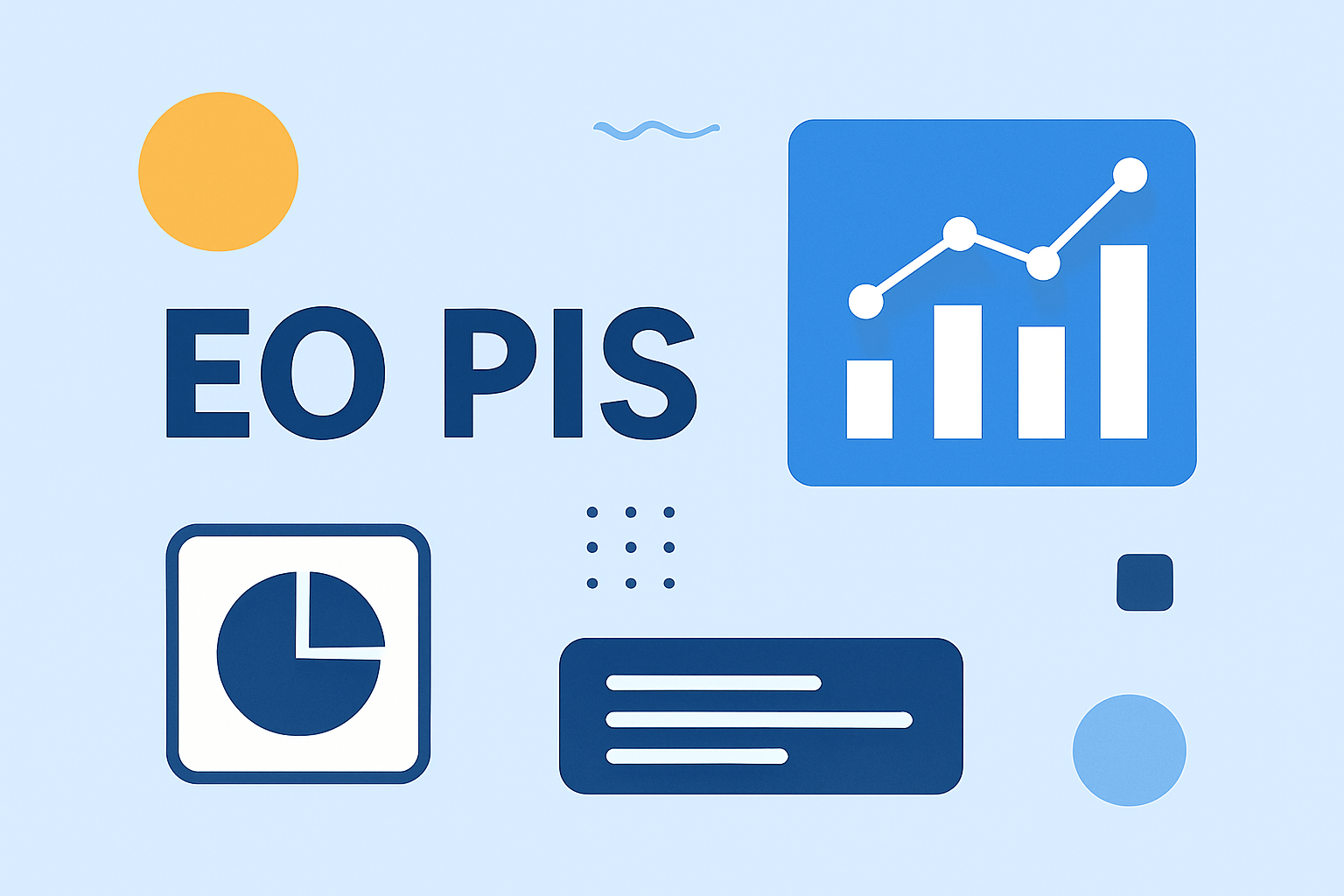In today’s dynamic corporate world, understanding Executive Operations (EO) Performance Indicators (Pis) is essential for leaders seeking to excel. This guide provides clear insights into measuring success with EO Pis, helping you refine strategies and leverage data to improve your organization’s performance. Let’s get started!
Introduction to EO Pis: What They Are and Why They Matter for Executives
In today’s fast-paced business world, making data-driven decisions can determine an organization’s success or failure. EO Pis—Executive Operational Performance Indicators—provide executives with a powerful tool to navigate their companies effectively. If you have ever felt overwhelmed by the multitude of available metrics, you are not alone. Understanding which measures matter most is essential for driving both growth and efficiency.
EO Pis offer more than numbers; they give leaders actionable insights for navigating complex markets. This guide explains EO Pis, their value, and ways to use them effectively to enhance organizational performance.
Understanding the Components
EO Pis, or Executive Operational Performance Indicators, are essential for driving organizational success. They consist of various components that help executives gauge performance effectively.
Key Performance Indicators (KPIs) serve as the backbone. These metrics provide quantifiable data on critical areas like sales growth, customer satisfaction, and operational efficiency. By focusing on KPIs relevant to their goals, executives can identify trends and make informed decisions.
Operational metrics work alongside KPIs to reveal insights into daily activities. These may include production times, employee productivity rates, or inventory turnover ratios.
Together, these components create a comprehensive framework for understanding an organization’s health. Executives can navigate challenges more confidently when they have real-time visibility into both strategic and operational aspects of their business landscape. Key takeaway: Combining KPIs and operational metrics gives a full performance picture.
How EO Pis Can Benefit Executives in Making Strategic Decisions
EO Pis empowers executives by providing real-time insights into organizational performance. These indicators allow leaders to quickly assess whether their strategies are on track or need adjustments.
With clear visibility of key metrics, decision-makers can identify emerging trends and shifts in the market. This proactive approach enables timely responses, fostering agility within the organization.
Moreover, facilitates data-driven discussions among leadership teams. When everyone is aligned with the same information, collaboration becomes more effective. Executives can debate options based on solid evidence rather than assumptions.
Additionally, using EO Pis enhances accountability across departments. Clear expectations set through these indicators ensure that every team understands its role in achieving strategic goals.
Ultimately, this clarity instills confidence in executive decisions and encourages a culture focused on continuous improvement and performance excellence. Key takeaway: Clarity supports better decision-making and drives excellence.
You might Also Like : Giniä
Implementing EO Pis in Your Organization: Step-by-Step Guide
Implementing EO Pis in your organization requires a structured approach. Start by identifying your objectives. What specific outcomes do you want to achieve?
Next, gather input from key stakeholders across different departments. Their insights can shape meaningful metrics that align with overall business goals.
Once you have clarity on KPIs, choose the right tools for data collection and analysis. There are various software solutions tailored for tracking performance indicators effectively.
After setting up the systems, train your team on how to interpret and utilize these metrics. Make sure everyone understands their role in achieving desired results.
Finally, establish regular review cycles to assess progress. This allows for adjustments based on real-time data and ensures that remain relevant as organizational needs evolve. Key takeaway: Frequent reviews keep EO Pis relevant and actionable.
Real-Life Examples of Successful Implementation
Companies use EO Pis for success. For example, one tech firm focused on customer satisfaction and product development, which led to a 30% rise in customer retention in a year.
A major retailer used EO Pis for inventory and sales, cutting excess stock by 25% and unlocking reinvestment capital.
A healthcare group tracked patient care metrics, improving emergency response and patient satisfaction.
These real-life cases illustrate how tailored EO Pis can lead organizations toward measurable improvements and enhanced decision-making capabilities across various industries. Key takeaway: Customizing EO Pis enables tangible results and smarter decisions.
Common Challenges and Pitfalls to Avoid When Using EO Pis
When integrating EO Pis into your organization, several challenges can arise. One common pitfall is the misalignment of KPI with organizational goals. If these indicators don’t reflect what truly matters, executives may find themselves navigating in the dark.
Another issue is data quality. Relying on inaccurate or outdated information can lead to misguided decisions. Regular audits and updates are essential to ensure that all metrics are trustworthy.
Overcomplicating the system is another trap to avoid. Keeping EO Pis straightforward allows for quick insights without overwhelming team members.
Lastly, neglecting employee buy-in can hinder effective implementation. When staff don’t understand or value these performance indicators, engagement diminishes, making it difficult to harness their full potential.
Addressing these challenges head-on fosters a more productive environment where EO Pis thrive and contribute meaningfully to decision-making processes. Key takeaway: Overcoming EO PI challenges leads to more productive organizations.
Conclusion: The Future of EO Pis and Their Impact on Executive Decision-Making.
The landscape of executive decision-making is rapidly evolving, and EO Pis are at the forefront of this transformation. As organizations increasingly rely on data-driven insights, the adoption of effective performance indicators becomes essential. These metrics not only streamline operations but also empower leaders to make informed decisions with confidence.
As we look to the future, embracing EO Pis will likely become a fundamental aspect of successful leadership. Organizations that harness these insights can anticipate market shifts, respond proactively to challenges, and capitalize on emerging opportunities. The integration of EO Pis into corporate strategy will create a competitive edge in an ever-changing business environment.
By prioritizing transparency and accountability through these key performance indicators, executives can foster a culture that values strategic thinking and adaptability. This shift towards data-centric decision-making promotes agility within teams while enhancing overall organizational resilience.
Ultimately, as more businesses recognize the value of EO Pis, their impact on executive decision-making will continue to grow—shaping how companies navigate complexity in pursuit of sustainable success in tomorrow’s marketplace. Key takeaway: Embracing EO Pis shapes smarter, more resilient executive decisions.

